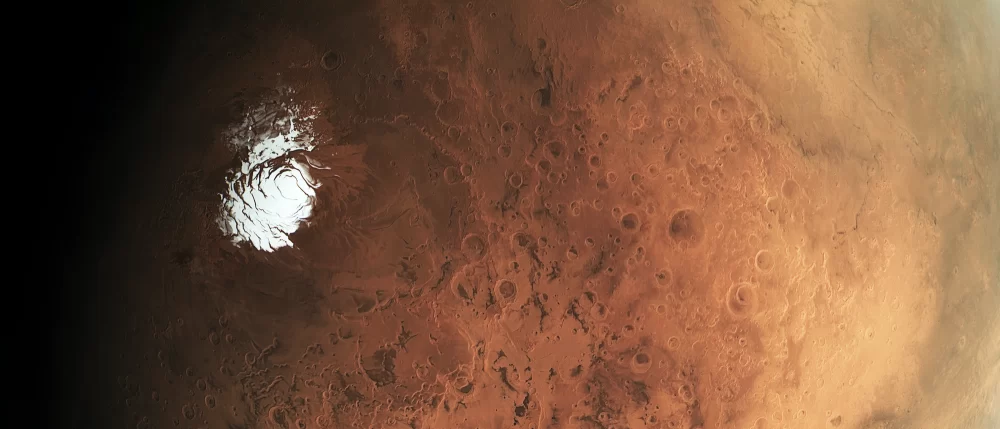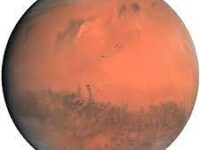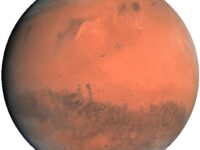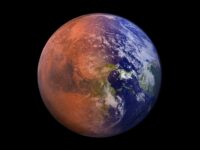NASA, as part of its everlasting odyssey to acquire knowledge about Earth’s famous neighbor, has launched yet another rover to embark on a treacherous expedition to the red, rocky terrains of Mars. The spacecraft was granted the name Perseverance, a title fitting for the government agency’s undertaking. This mission would be no straightforward task.
Prior to Perseverance’s journey on the red planet, the nature of Mars’ atmosphere had remained rather ambiguous to NASA researchers. Beyond being aware of its notoriously smoggy ambiance and dust storms, NASA lacked a deeper, quantitative understanding of the driving forces behind these phenomena. However, during this mission, Perseverance has already made striking notable discoveries about the planet’s atmosphere — a result of key hardware that its predecessors did not have: the Mars Environmental Dynamics Analyzer (MEDA) and microphones. According to NASA, these state-of-the-art sensors have the capability of providing quantitative data regarding Mars’ “temperature, wind speed and direction, pressure, relative humidity, and dust size and shape.”
Perseverance has already made striking notable discoveries about the planet’s atmosphere — a result of key hardware that its predecessors did not have: the Mars Environmental Dynamics Analyzer (MEDA) and microphones.
Overall, very little was understood about Mars’ aeolian and acoustic environments. A planet’s aeolian environment is characterized by the way the sand, sediment, and dust of the terrain are transported and deposited by the wind all throughout the surface. The acoustic environment of a planet pertains to its quality of sound, which is a result of the way sound waves propagate through its atmosphere and cause vibrations.
The ever-changing, dynamic qualities of Mars’ surface can be attributed to the aeolian processes, such as dust storms that keep it in perpetual motion. Since the atmosphere of Mars is never stagnant, researchers from the Mars 2020 Atmospheres Working Group found that the “large dust storms drastically alter atmospheric temperatures, densities, and circulation, presenting hazards to robotic and human missions.” Perseverance’s devices can discern and recognize dust clouds by gathering evidence of the way sunlight changes every second. Additionally, its microphones grant, for the first time, the opportunity to record sounds of turbulence and wind, and as the Mars 2020 Atmospheres Working Group researchers noted, “high-resolution cameras … may be used to image aeolian activity and features, such as dust devils and surface wind streaks.”
From this, they concluded that at its landing site, the Jezero Crater, the direction of the wind is a result of the upslope flow of the Isidis basin and the downslope flow of the crater rim, causing the direction to switch twice every Martian day. During the height of the day to sunset, the wind blows from east to southeast, as controlled by the Isidis basin, while at night, it usually blows from west to northwest, as controlled by the crater rim. Researchers have also noticed a remarkable relationship between the characteristics of the wind vortices and the concentration of dust present. Vortices that contain more dust undergo more significant pressure drops and have higher wind speeds. Therefore, when a vortex has strong tangential winds combined with a pressure drop, the lifted dust amount increases. That led researchers to believe that in order to pick up dust, vortices must have a minimum wind speed of 15 meters per second or a central pressure below 0.0026% of Earth’s atmospheric pressure.
Mars’ lower atmosphere is heavily susceptible to turbulence due to its thinness and inability to maintain consistent temperatures. This turbulence causes fluctuations in atmospheric pressure and wind speeds, and further fluctuations in temperature, as noted by Perseverance’s MEDA. However, the opposite phenomenon occurs at night when the atmosphere undergoes radiative cooling and, consequently, conditions stabilize, minimizing turbulence and atmospheric shifts. Using Perseverance’s observations, researchers at the Jet Propulsion Laboratory discerned that because of low atmospheric pressure and the prevalence of CO2 in the atmosphere, the speed of sound varies depending on the pitch: Higher-pitch sounds travel faster than lower-pitch sounds. Additionally, the Jet Propulsion Laboratory researchers were astounded by the atmosphere’s ability to significantly diminish the intensity of sound waves as they propagate.
Perseverance’s odyssey remains far from complete; however, the scientific advances it has brought to light so far have been unparalleled by the efforts before it. Thanks to the rover, researchers are able to chip away at the ambiguity that surrounds the nature of the universe and all things beyond Earth.






